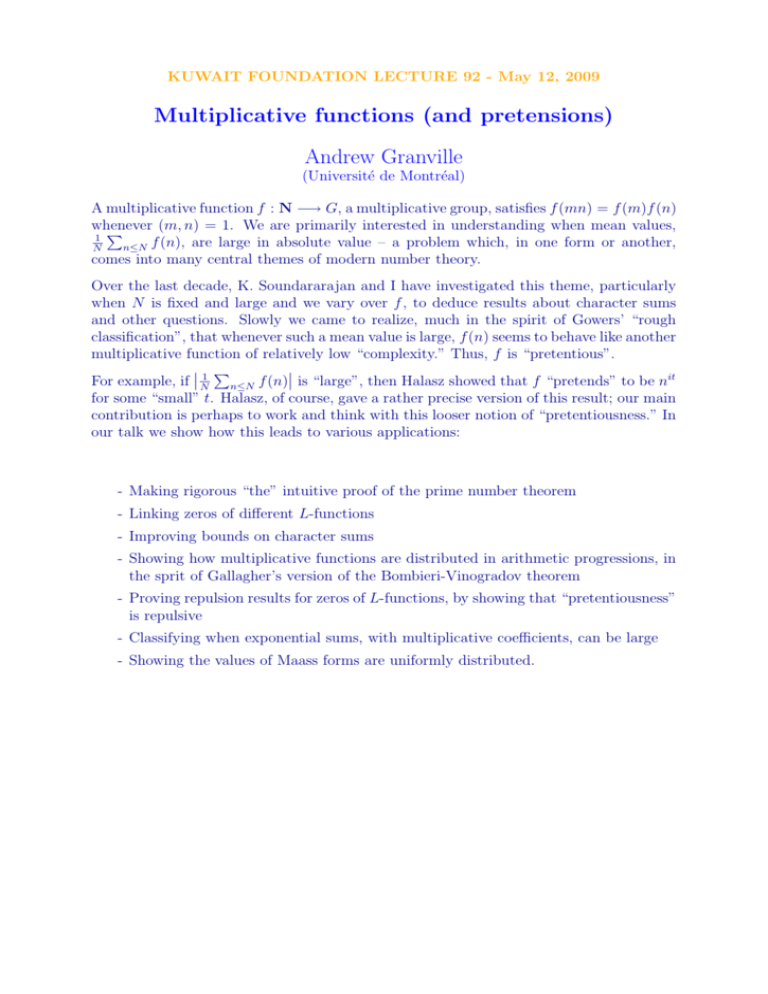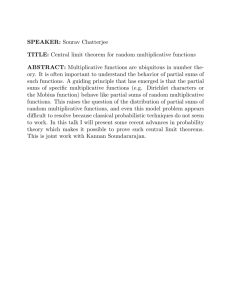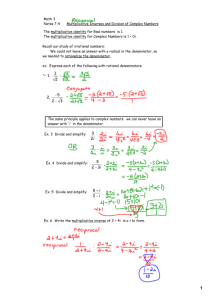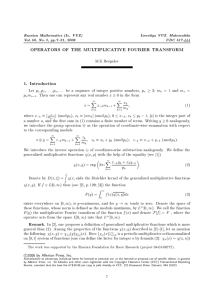Multiplicative functions (and pretensions) Andrew Granville
advertisement

KUWAIT FOUNDATION LECTURE 92 - May 12, 2009 Multiplicative functions (and pretensions) Andrew Granville (Université de Montréal) A multiplicative function f : N −→ G, a multiplicative group, satisfies f (mn) = f (m)f (n) whenever (m, n) = 1. We are primarily interested in understanding when mean values, P 1 n≤N f (n), are large in absolute value – a problem which, in one form or another, N comes into many central themes of modern number theory. Over the last decade, K. Soundararajan and I have investigated this theme, particularly when N is fixed and large and we vary over f , to deduce results about character sums and other questions. Slowly we came to realize, much in the spirit of Gowers’ “rough classification”, that whenever such a mean value is large, f (n) seems to behave like another multiplicative function of relatively low “complexity.” Thus, f is “pretentious”. P For example, if N1 n≤N f (n) is “large”, then Halasz showed that f “pretends” to be nit for some “small” t. Halasz, of course, gave a rather precise version of this result; our main contribution is perhaps to work and think with this looser notion of “pretentiousness.” In our talk we show how this leads to various applications: - Making rigorous “the” intuitive proof of the prime number theorem - Linking zeros of different L-functions - Improving bounds on character sums - Showing how multiplicative functions are distributed in arithmetic progressions, in the sprit of Gallagher’s version of the Bombieri-Vinogradov theorem - Proving repulsion results for zeros of L-functions, by showing that “pretentiousness” is repulsive - Classifying when exponential sums, with multiplicative coefficients, can be large - Showing the values of Maass forms are uniformly distributed.











